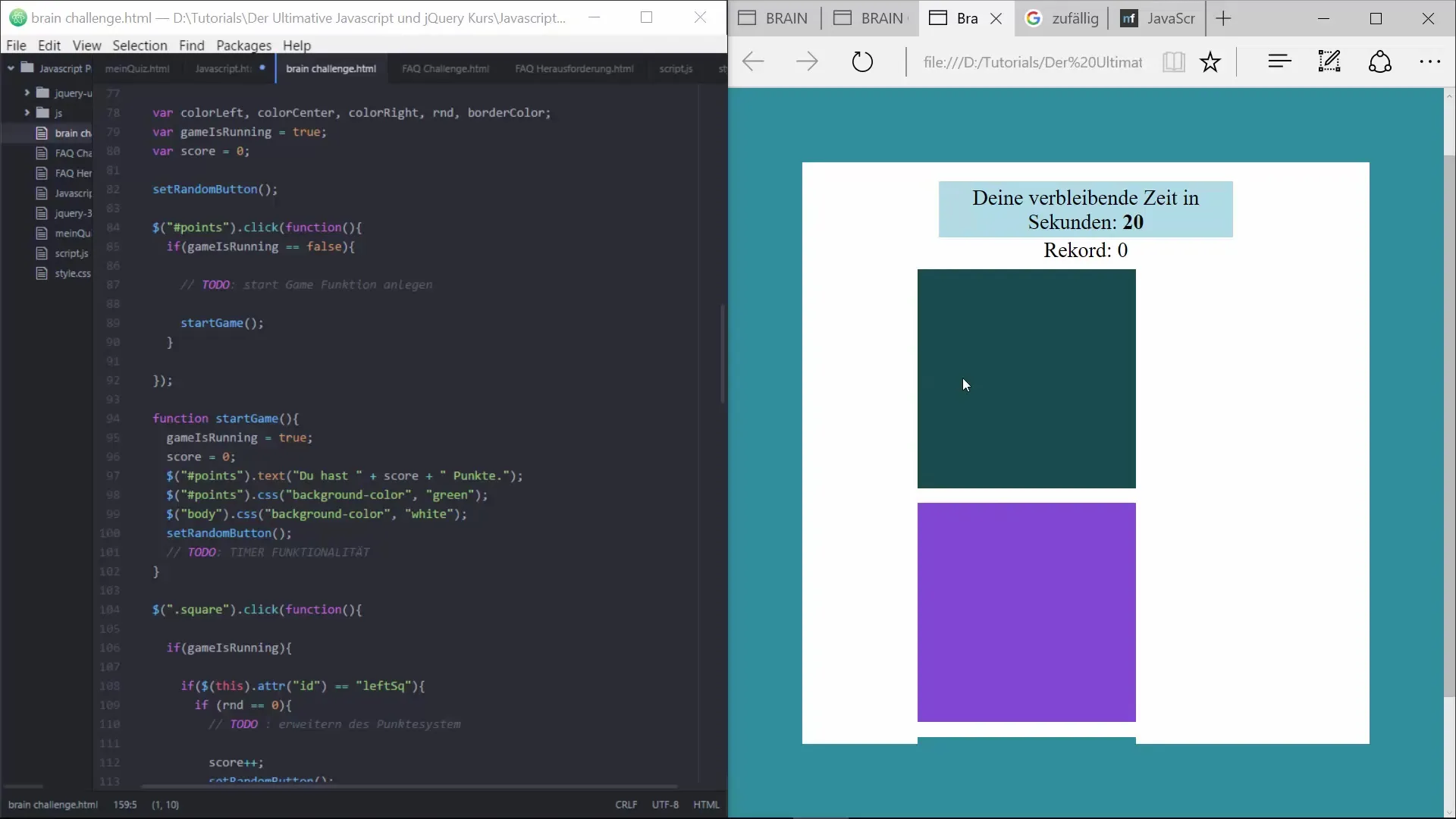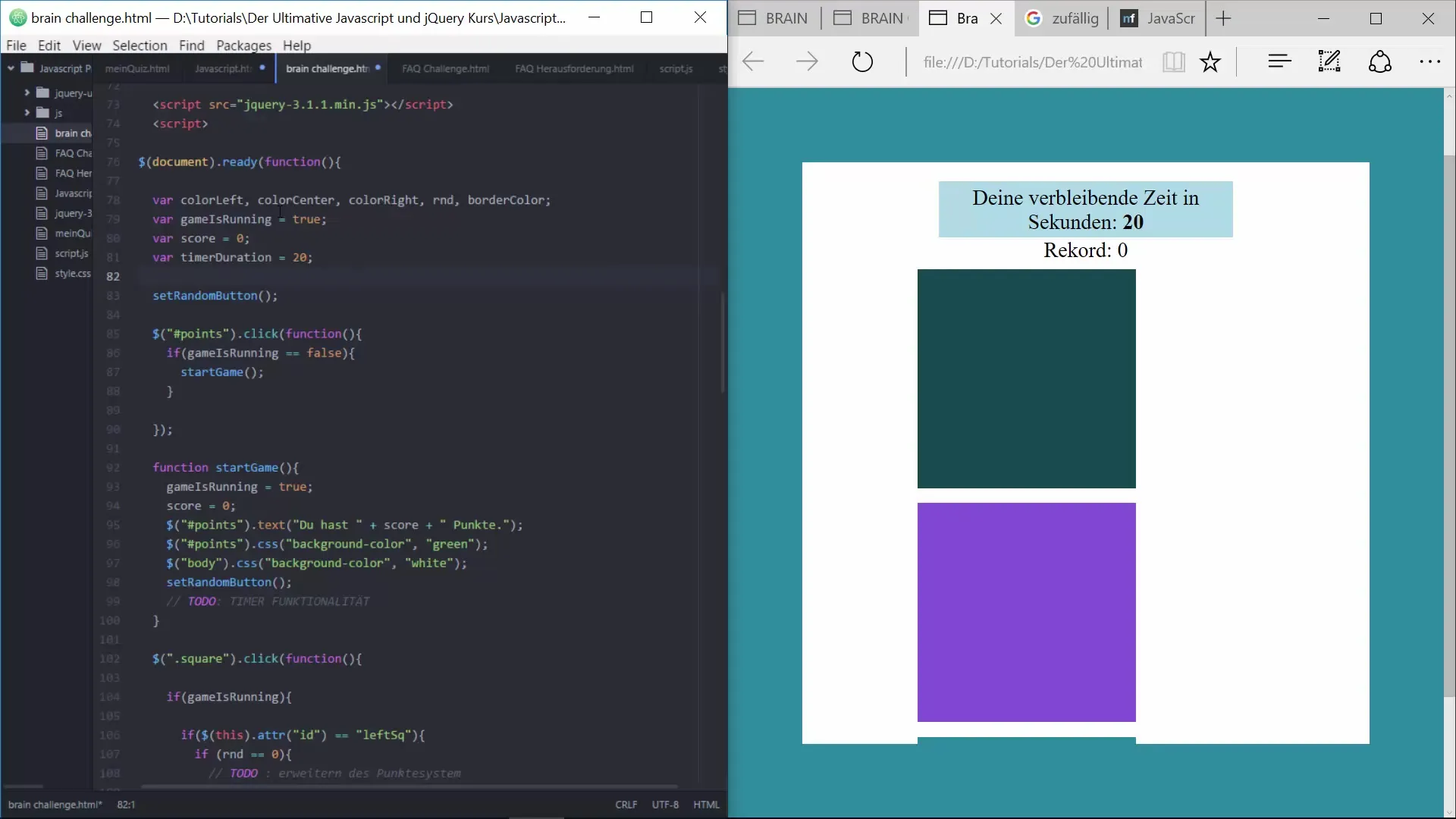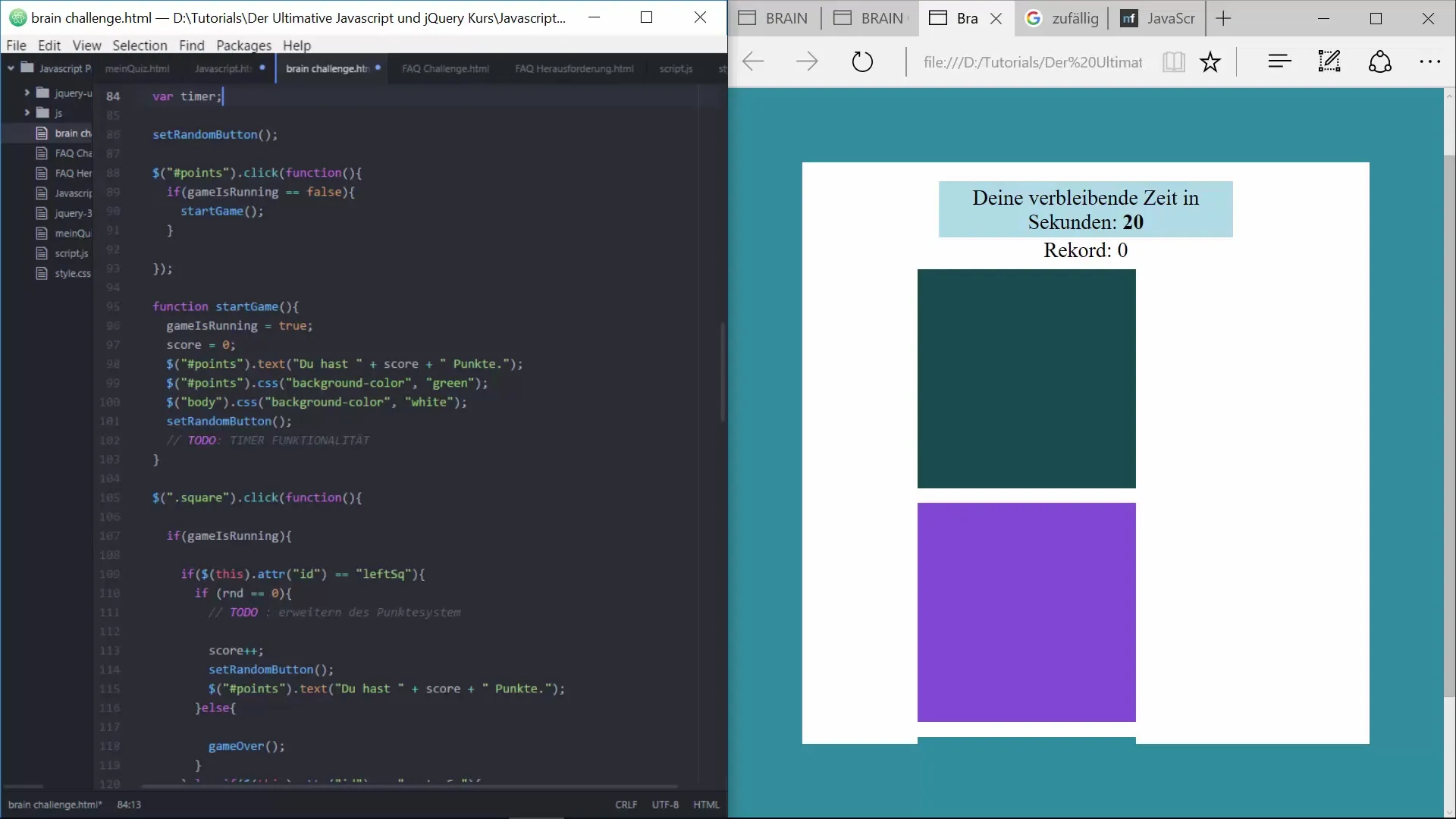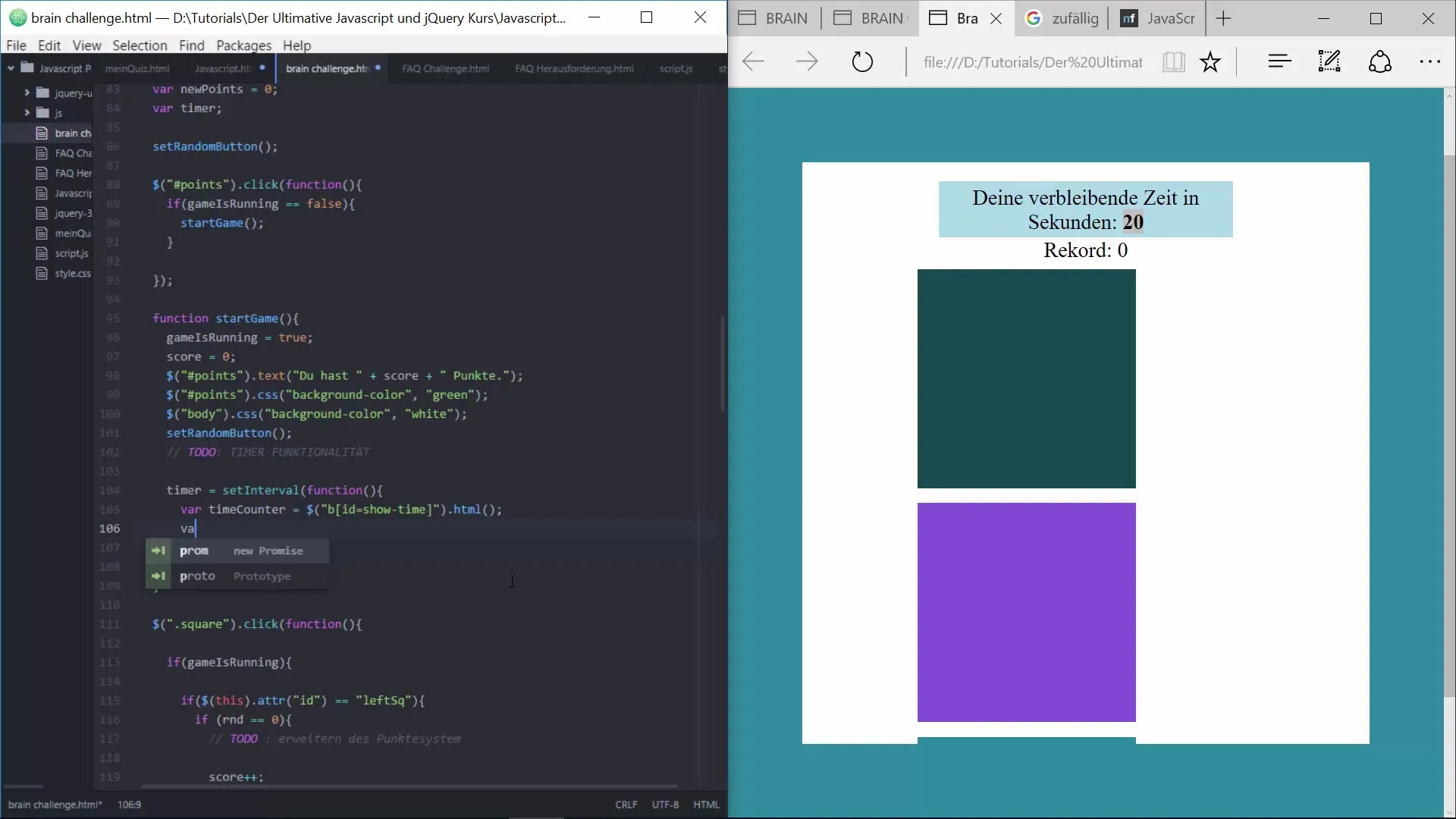The implementation of a timer in your JavaScript and jQuery project is an exciting step to enhance the gaming experience. This allows you to not only introduce a time limit for the game but also to calculate the players' scores more accurately. In this tutorial, we will show you how to successfully integrate a timer and optimize the scoring system. Let's dive into the development of your game together.
Key Takeaways
- The timer is created using the setInterval function and counts down the remaining game time.
- The score is now calculated based on the elapsed time between clicks.
- The game checks if the player's record has been broken and updates the display accordingly.
- You will receive a complete implementation of the timer and scoring system in your JavaScript game.
Step-by-Step Guide
Step 1: Define Timer Duration
First, you need to define a variable that stores the duration of the timer. You should create this variable globally so that it is accessible in different functions. I will name it timerDuration and set it to 20 seconds initially.

Step 2: Create Record and Points Variables
First, we need a record variable that stores the highest score of the game, as well as a newPoints variable that stores the points for each click. Set these variables to the initial value of 0.
Step 3: Timer Function with setInterval
In the startGame function, we will insert the timer logic. Here, we use setInterval to execute a function every 1000 milliseconds that updates the timer. Create a variable timeCounter that initially receives the value of the timerDuration variable.

Step 4: Update and Check Time
Every time the timer is updated, it must be reduced by 1. If timeCounter is equal to or less than 0, you call the gameOver function. In this function, the game ends, and the timer is stopped.
Step 5: Define Scoring System
Now it's time to calculate the points you receive for each click. We store the end time of the game and calculate the time difference from the start time to determine the points. To make our scoring system more precise, we use the formula: newPoints = 100000 / duration.
Step 6: Update Record
Every time the player scores points, you should check if the current score is greater than the record. If so, update the record and adjust the display.
Step 7: Troubleshooting
If an error message appears during the implementation of the timer or the scoring system, check if the start time is set correctly. No one wants to play a game without points! We ensure that the start and end times are measured correctly.

Step 8: Reset Timer
When the game is restarted, you must ensure that the timer is reset to 20 seconds. Make sure that the HTML value of the timer is also updated so that the player can see the remaining time.

Step 9: Conduct Final Tests
Now that all logics are implemented, test the game to ensure everything works smoothly. Make sure that the points are counted correctly, and the timer counts down accurately.
Step 10: Game Improvements
Think about what additional features you could add to make the game more engaging. For example, you could add extra text to explain what the player needs to do.
Summary – Implementing Timer and Scoring System for the JavaScript Color Game
You have learned how to implement a timer in your JavaScript color game and improve the scoring of the game. With this guide, you are well-equipped to further develop your game and add more features. Experiment with the implemented functions to further enhance your programming skills.
Frequently Asked Questions
How do I implement the timer in my game?You can implement the timer using the setInterval function to update the timer every 1000 milliseconds.
How do I calculate the points for each click?The points are calculated based on the time that elapses between clicks.
How do I set the record in the game?Check after each point if it is higher than the previous record and update the record accordingly.
What should I do if my timer does not work?Check if the start and end times are set correctly, and if the seconds are being subtracted logically.
How can I make the game more appealing?Add additional text, graphical elements, or even sound effects to enhance the gaming experience.


